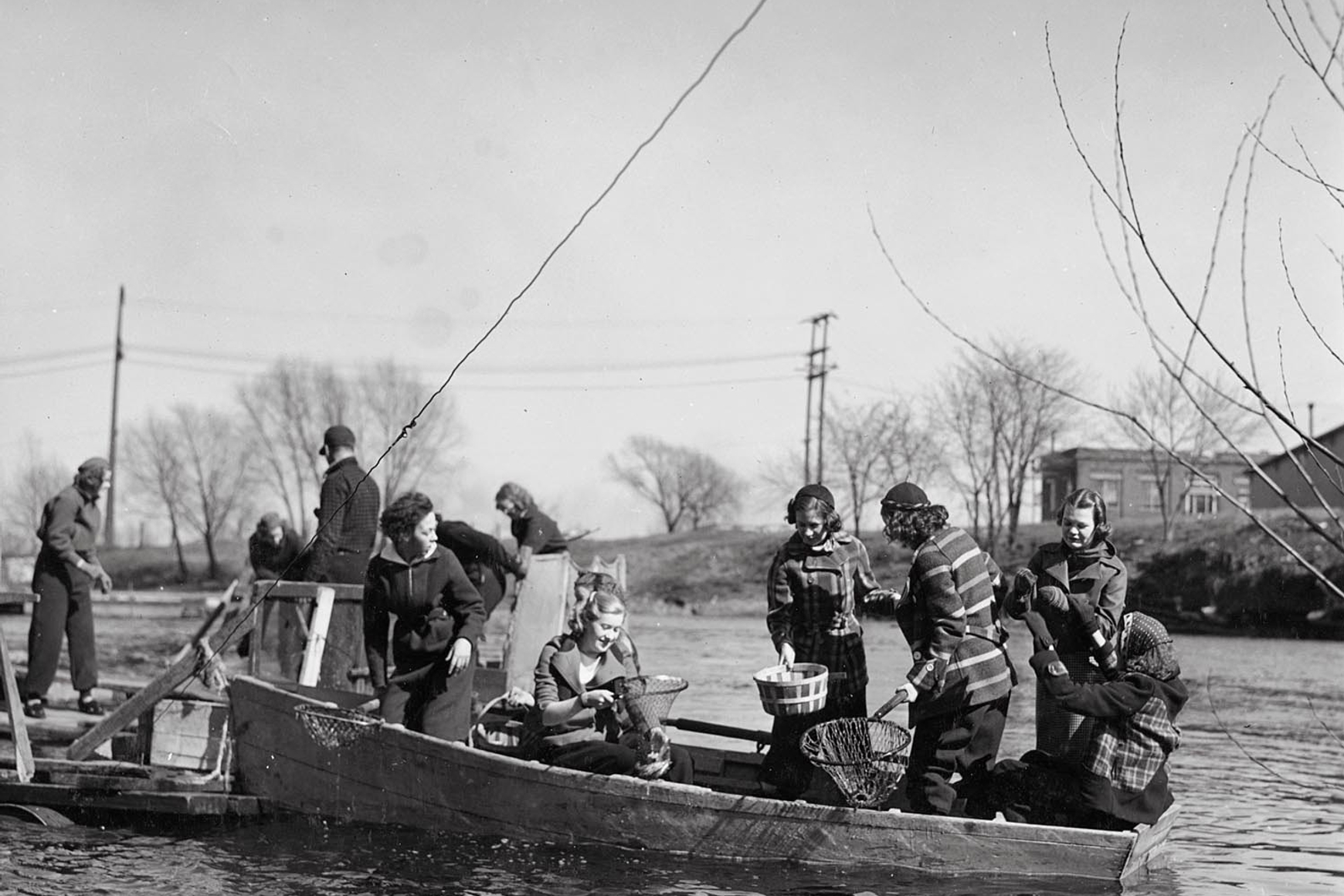Back in the day
 Women dip for smelt from a boat on the Menominee River in Marinette in April 1938.
Women dip for smelt from a boat on the Menominee River in Marinette in April 1938.© DNR FILES
SMELT RUNS WERE CAUSE TO CELEBRATE — AND CROWN QUEENS!
Kathryn A. Kahler
As annual traditions go, smelt dipping has seen its ups and downs over the decades.
Dipping, or seining, is the typical method of catching these silvery herring-like fish that swim upstream in spring to spawn. A Conservation Bulletin story in October 1948 estimated about 5 million to 6 million pounds were caught each year from 1936 through 1942 by commercial and sport fishermen. Then a mysterious pathogen is believed to have caused a disastrous crash and in 1944, the reported catch was a mere 4,344 pounds. In the decades since, populations have fluctuated widely.
But in its heyday, the smelt run was a much-anticipated event and the focus of festivals along the Lake Michigan coast.
 Crowds of residents line the streets of Marinette for the Smelt Festival parade in April 1941.
Crowds of residents line the streets of Marinette for the Smelt Festival parade in April 1941.© DNR FILES
"Wisconsin: A guide to the Badger State," published in 1941, describes an annual event in Marinette: "The smelt run in greatest number at night, and from 9 p.m. until midnight all Marinette is festive. The Interstate Bridge is closed to traffic, every foot is crowded with poles, flashlights, machines for lifting the seines, and baskets full of shining fish. The riverbank is a blaze of light from bonfires. Barkers yell their wares, fireworks light the whole sky, and beer flows freely. The festival reaches a climax with the crowning of the Smelt Queen."
It's not likely that smelt runs in modern times will ever be the cause of celebrations like back in the day, but old-timers or new smelt enthusiasts up for a challenge can find fellow dippers at Jones Island in Milwaukee, or in the Hot Pond on the Ashland side of Chequamegon Bay. You may even get a bucketful, or enough for a meal!
Kathryn A. Kahler is associate editor of Wisconsin Natural Resources magazine.
FACTS ABOUT SMELT
- Rainbow smelt — small, silvery, herring-like fish that are not native to the Great Lakes — were introduced by an accidental escape from Crystal Lake near Frankfort, Michigan, in 1912.
- Smelt spend most of the year in the deep waters of lakes Michigan and Superior, moving to shallower water and mouths of tributary streams when water temperature reaches about 40 degrees in the spring.
- The Lake Michigan smelt run is typically between late March and the end of April. For information on the smelt run, go to Smelt runs on lakes Michigan and Superior.
- The smelt run begins later on Lake Superior, usually the last two weeks of April and typically peaks just after the ice leaves Chequamegon Bay. Call the Ashland Chamber of Commerce at 800-284-9484 in mid-April to check on the run.
- Visit Fishing regulations for information about Wisconsin's spearing, netting and bait harvesting regulations.
- Don't transport or use live smelt for bait.
- Don't dispose of smelt entrails or clean entrail buckets in Wisconsin waters.
- Don't seine or collect minnows from waters that contain smelt.
- Always drain your livewells, bilge water and transom well before leaving the boat access.
- Never release unused bait fish into any body of water.

